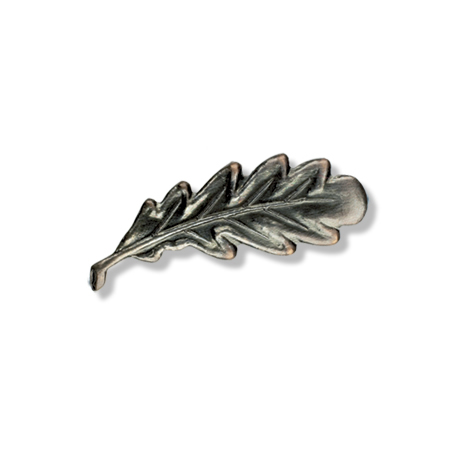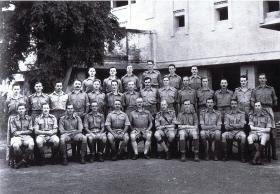Tom Wainwright graduated with a degree in agriculture from Reading University, after spending his formative years living and helping on his father’s farm in Christchurch, Hampshire. Leaving university, he started work for the chemical company ICI.
Shortly after the war broke out in 1939, he volunteered for the Army and soon gained a commission in the Royal Berkshire Regiment. He was posted in India as part of the large British garrison, but somewhat bored towards the end of 1941, he answered the appeal for volunteers for Airborne Forces from troops stationed in India.
Tom Wainwright was one of the original officers selected to join the 151 Parachute Battalion. He served with the unit in India, before it was renumbered 156 Battalion in November 1942, and went on to serve in Egypt, North Africa and Italy before returning to the UK in late 1943.
By the time of Operation Market Garden in September 1944, he was a Captain and in command of Support Company of 156 Parachute Battalion. Arriving on DZ Y Ginkel Heath as part of the Second Lift, his unit’s first objective was to move to some high ground to the north of Arnhem. The Battalion failed to get further than the area around the Dreijenseweg to the north of Oosterbeek. On 19 September 1944, Tom was involved in the fighting close to the road, as the close country really stopped his heavier weapons having any real effect on the fighting. At one stage he was in a position with five other soldiers and he thought it somewhat ironic that out of these men, he had sent three of them for court martial.
Later that day the Battalion was grouped around the village of Wolfheze and a party containing Tom became isolated and it was clear the Germans were close by. A decision was taken to head towards Oosterbeek. By then it was around midnight and as the group set off, they were soon challenged by some Germans. Most of the party were captured but Tom and Lt Ronnie Adams evaded capture. Eventually they managed to make contact with the Dutch Resistance and ended up at Ede.
In early October Tom Wainwright and Warrant Officer Bob Grainger from the 10th Parachute Battalion was sent to reconnoitre a route for the Pegasus 1 escape plan, from a point near Bennekom to the river crossing point. They carried out a dangerous reconnaissance of a route near Wageningen but decided it was not feasible. On the next night they moved nearer Renkum and decided this route offered chance of a successful escape.
During the night of 22-23 October 1944, 138 men attempted to escape across the Rhine. Near the river the column bumped into a German patrol and it said Tom shouted; ‘Get the bastards’ and the leading men opened fire and the Germans disappeared. Tom was one of the last men to cross the river. For his actions at Arnhem and the Pegasus 1 escape he was awarded the Dutch Bronze Cross and a Mention in Despatches.
Back home in England Tom was given command of a Company in the amalgamated 1st and 156 Battalions. He left the army after VE Day mid-1945 and rejoined ICI, working in various locations around the world during his career. Towards the end of his working life he worked in Denmark and met and married a local woman. On retirement they returned to live there.
Tom Wainwright died in June 2004.
Further reading
John O'Reilly, 156 Parachute Battalion: From Dehli to Arnhem (2009), Thoroton Publishing.
With assistance from Niall Cherry
Read More


Latest Comments
There are currently no comments for this content.
Add Comment
In order to add comments you must be registered with ParaData.
If you are currently a ParaData member please login.
If you are not currently a ParaData member but wish to get involved please register.